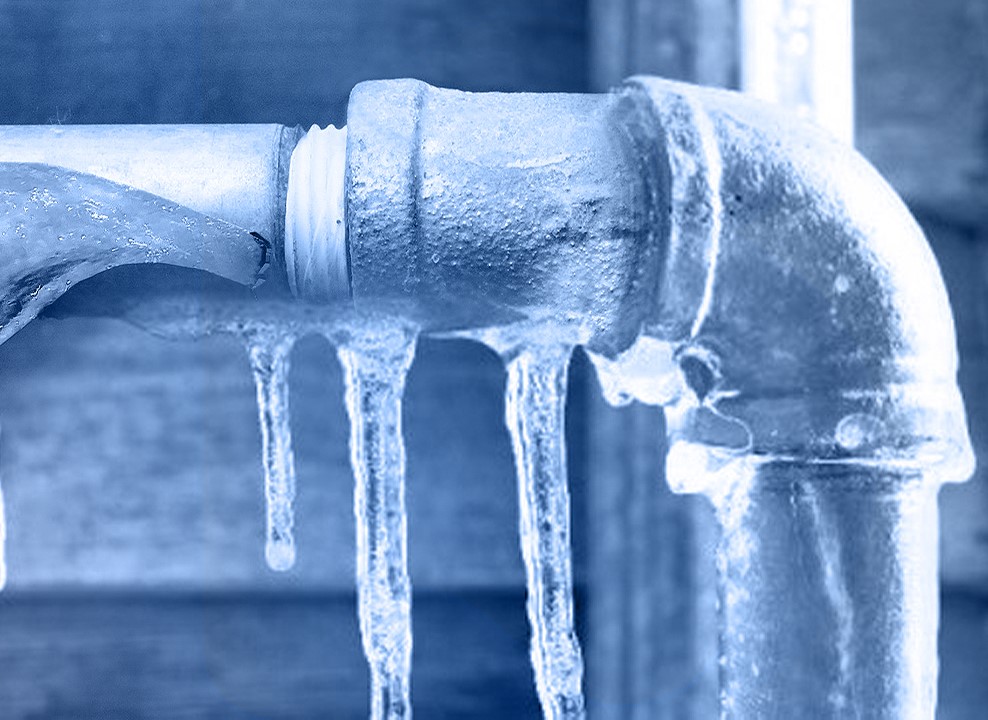Avoiding Frozen Plumbing in Cold Weather: Pro Tips
Avoiding Frozen Plumbing in Cold Weather: Pro Tips
Blog Article
We have come across this article about How To Avoid Freezing Pipes directly below on the internet and figured it made sense to talk about it with you on this page.

Cold weather can wreak havoc on your plumbing, specifically by freezing pipes. Here's just how to prevent it from taking place and what to do if it does.
Introduction
As temperature levels drop, the threat of frozen pipelines increases, possibly leading to pricey repair services and water damages. Comprehending exactly how to avoid frozen pipes is important for home owners in cool climates.
Understanding Icy Pipelines
What triggers pipelines to freeze?
Pipelines freeze when revealed to temperatures listed below 32 ° F (0 ° C) for extended durations. As water inside the pipes ices up, it expands, putting pressure on the pipe wall surfaces and potentially causing them to break.
Risks and problems
Frozen pipelines can bring about water system disturbances, residential or commercial property damages, and pricey repair work. Ruptured pipelines can flooding homes and cause extensive architectural damage.
Indicators of Frozen Pipes
Determining frozen pipes early can avoid them from rupturing.
Exactly how to identify frozen pipes
Search for decreased water flow from faucets, uncommon smells or noises from pipes, and noticeable frost on exposed pipes.
Avoidance Tips
Protecting at risk pipelines
Wrap pipes in insulation sleeves or use warm tape to protect them from freezing temperature levels. Focus on pipelines in unheated or external areas of the home.
Heating methods
Maintain interior areas sufficiently heated up, specifically locations with pipes. Open cabinet doors to allow warm air to circulate around pipelines under sinks.
Protecting Outdoor Plumbing
Garden hoses and outdoor taps
Separate and drain pipes yard tubes prior to wintertime. Install frost-proof faucets or cover exterior faucets with protected caps.
What to Do If Your Pipes Freeze
Immediate actions to take
If you believe icy pipes, keep taps open to alleviate stress as the ice thaws. Use a hairdryer or towels taken in hot water to thaw pipes gradually.
Long-Term Solutions
Structural changes
Think about rerouting pipelines far from exterior wall surfaces or unheated areas. Include extra insulation to attic rooms, basements, and crawl spaces.
Upgrading insulation
Buy top notch insulation for pipes, attic rooms, and walls. Appropriate insulation aids maintain constant temperature levels and reduces the danger of icy pipelines.
Verdict
Protecting against frozen pipes requires positive procedures and quick actions. By comprehending the causes, signs, and preventive measures, homeowners can safeguard their pipes during cold weather.
5 Ways to Prevent Frozen Pipes
Drain Outdoor Faucets and Disconnect Hoses
First, close the shut-off valve that controls the flow of water in the pipe to your outdoor faucet. Then, head outside to disconnect and drain your hose and open the outdoor faucet to allow the water to completely drain out of the line. Turn off the faucet when done. Finally, head back to the shut-off valve and drain the remaining water inside the pipe into a bucket or container. Additionally, if you have a home irrigation system, you should consider hiring an expert to clear the system of water each year.
Insulate Pipes
One of the best and most cost-effective methods for preventing frozen water pipes is to wrap your pipes with insulation. This is especially important for areas in your home that aren’t exposed to heat, such as an attic. We suggest using foam sleeves, which can typically be found at your local hardware store.
Keep Heat Running at 65
Your pipes are located inside your walls, and the temperature there is much colder than the rest of the house. To prevent your pipes from freezing, The Insurance Information Institute suggests that you keep your home heated to at least 65 degrees, even when traveling. You may want to invest in smart devices that can keep an eye on the temperature in your home while you’re away.
Leave Water Dripping
Moving water — even a small trickle — can prevent ice from forming inside your pipes. When freezing temps are imminent, start a drip of water from all faucets that serve exposed pipes. Leaving a few faucets running will also help relieve pressure inside the pipes and help prevent a rupture if the water inside freezes.
Open Cupboard Doors
Warm your kitchen and bathroom pipes by opening cupboards and vanities. You should also leave your interior doors ajar to help warm air circulate evenly throughout your home.

As an enthusiastic reader about Preventing and dealing with frozen pipes, I assumed sharing that section was a smart idea. Sharing is good. Helping others is fun. We appreciate your readership.
Call Today Report this page